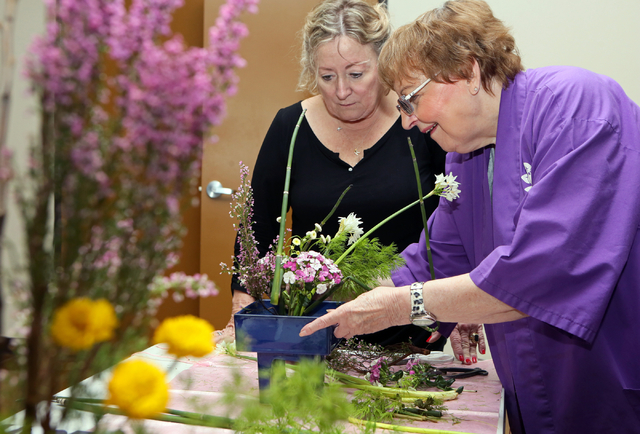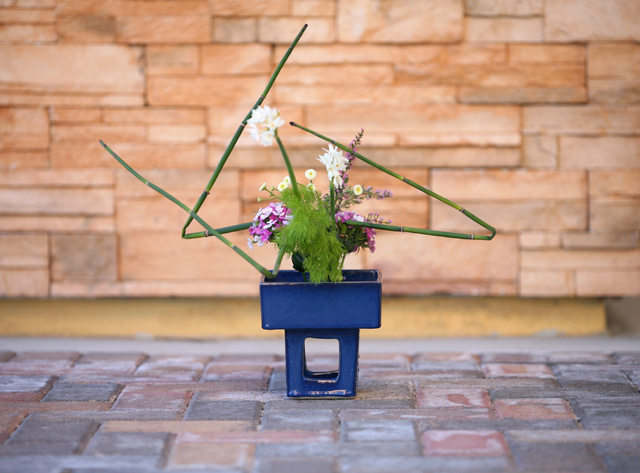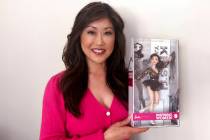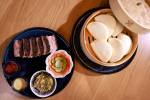Japanese art of flower arranging has home in North Las Vegas
The final design is meant to look simple with the right amount of elegance and beauty.
Yet for members of the Ikenobo Ikebana Society, ikebana, the Japanese art of arranging flowers, is more than simply putting them in a container. It is a disciplined art form in which the arrangement can convey happiness or sadness, impressions of nature, the joy of various seasons and events or creative themes.
“Ikebana is all about nature and its artistic ability,” said sensei Muriel Scrivner. “The reaction of their design to the viewer is an inner essence of nature.”
Scrivner started doing ikebana in 1962. She began taking lessons at an Ikenobo Ikebana school in Japan, where she studied the art for eight years after moving there with her military husband.
“I just fell in love with it,” Scrivner said. “It’s very therapeutic and physically, mentally and spiritually rewarding. As a matter of fact, in Japan, it’s a proven fact that people who study ikebana live longer.”
Scrivner brought her artform to Southern Nevada, where she teaches members of the Ikenobo Ikebana Society twice a month.
She spends the rest of her time teaching classes in Arizona, Colorado, Florida and North Carolina.
Ikebana features three basic styles: rikka, shoka and free style.
Rikka is the source of all later Ikenobo styles, according to the Ikenobo Ikebana Society’s brochure. Its basic parts are arranged with many contrasting but complementary materials. Shoka is a simpler style that incorporates three branches to form a unity, which expresses life’s perpetual change and renewal. Free style is the most recent and expressive style. It is broadly divided into a naturalistic style and a more abstract one.
“Ikebana is a whole new realm with its own language and structure. It’s very peaceful and Zen-like,” said Lenore Kakita, a member of the group. “In Japan, it’s a curved branch that’s going to be much more interesting to work with than the straight stems. You want the irregularity. That’s what makes the creations more striking.”
There are 18 levels of study included in the practice, and a certificate from Japan is presented to students after they have mastered a phase of ikebana.
Scrivner said students can work at their own pace and do not need prior knowledge to start. Classes and workshops allow participants to work at their own pace and skill level.
Every three years, students have a chance to travel to Japan and spend a week touring. This year, Scrivner plans to take her students in October.
The history of ikebana dates back approximately 500 years to Ikenobo — the oldest school of ikebana, according to the brochure. The predecessors in ikebana believed that flowers were not only beautiful but that they could reflect the passing of time and the feelings in their own hearts.
Members meet twice a month to learn ikebana at the Las Vegas Buddhist Sangha Center, 4110 N. Martin Luther King Blvd.
Classes are $25 for shoka and free style, which last between 90 minutes to two hours and $50 for rikka, which can last from two to four hours.
Displays typically last from two weeks to a month, according to Scrivner.
“It looks simple until you try it,” said Karen Elliott, a member of the group. “There are very specific rules of placement, but the end result is a very beautiful form of art. The best part is we leave every class with beautiful arrangements for our home.”
Contact North View reporter Sandy Lopez at slopez@viewnews.com or 702-383-4686. Find her on Twitter: @JournalismSandy.


































